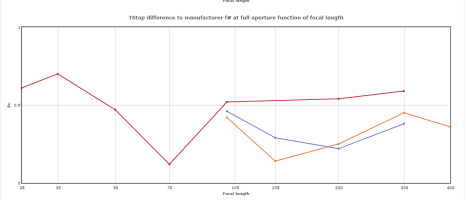Genuinely curious (thesis not required

).
Neuro dips his toes into this in his 'thesis' here:
https://www.the-digital-picture.com/Photography-Tips/canon-eos-dslr-autofocus-explained.aspx
Generally, an aperture value is associated with an AF line sensor. The terminology usually used is "f/number-sensitive", e.g, you may have an f/5.6-sensitive line sensor, or an f/2.8-sensitive line sensor. The f/number refers to the maximum aperture of the lens, because AF is performed with the lens wide open (i.e. the aperture you choose for the shot does not matter, only the max aperture of the lens). The use of 'sensitivity' in this context implies that light levels matter, because that's what we think of when we normally use f/numbers. In this case, though, a wider aperture simply means a wider baseline for the rangefinder system is required for that line to function. Personally, I think better terminology might be to use threshold instead of sensitivity, so an f/2.8-threshold line would require an f/2.8 lens to function, and if you mounted an f/4 lens, that sensor line would not operate. An f/5.6-threshold sensor would work with any lens having a max aperture of f/5.6 or wider.
Note that these thresholds are not absolute - a lens with a narrower aperture than the threshold might still work, but at reduced effectiveness, accuracy, and speed. Thus, Canon limits the functionality to the rated aperture for a given AF sensor. However, some third party lenses (e.g. Tamron and Sigma zooms with a max aperture of f/6.3 at the long end) effectively trick the AF system into thinking there's an f/5.6 lens attached. Likewise, although not condoned by Canon, it is possible to use tape to block some of the contacts on a Canon 1.4x extender used with an f/5.6 lens, resulting in the camera attempting to autofocus with an f/8 lens on bodies which are limited to f/5.6. Sometimes, it even works...
All EOS bodies have f/5.6-sensitive sensors, and thus will work with any Canon EF or EF-S lens. Some 1-series bodies have an f/8-sensitive sensor at the center AF point, enabling them to autofocus (properly, and with official support) with an f/5.6 lens plus 1.4x extender or an f/4 lens plus 2x extender - a significant benefit for users of supertelephoto lenses. Notably, that feature is not included in the specification for the 1D X, which is limited to f/5.6 lenses for autofocus.
An f/2.8 sensor line is more accurate than an f/5.6 sensor line - the wider the aperture threshold, the wider the rangefinder baseline for triangulation and thus, the more accurate the measurement of focus. However, the wider the aperture, the fewer lenses that work with that aperture (and the more expensive those lenses are), and also, the detection range of f/2.8 sensors is narrower, meaning it may take longer for an f/2.8 line to achieve a focus lock when a subject is well out of focus. As a result, AF systems will usually focus in two steps when possible - 'coarse' focus with an f/5.6 line, then 'fine' focus with an f/2.8 line.
- A

